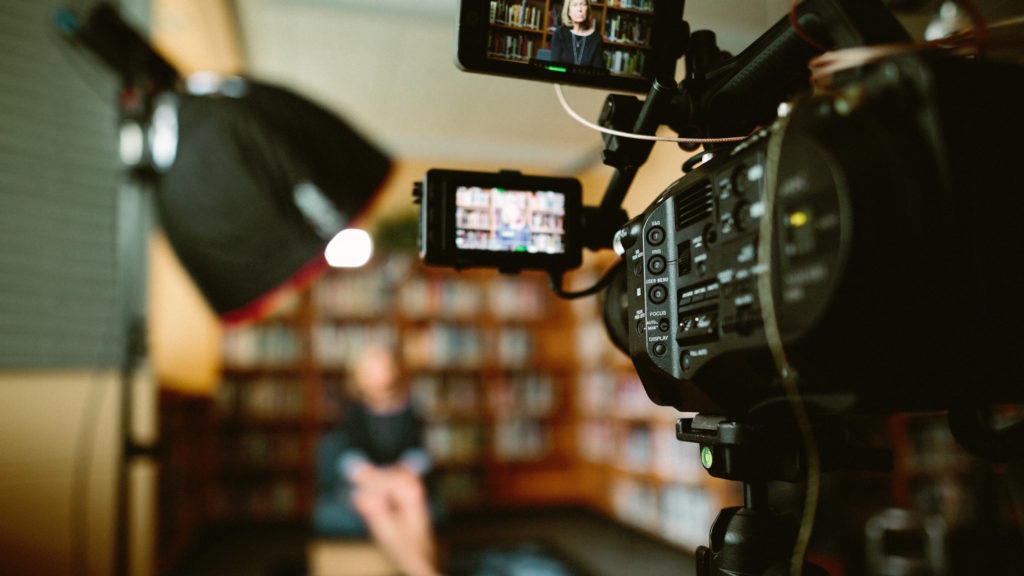The Ultimate Guide to Legal Videography for Lawyer and Legal Teams
The Ultimate Guide to Legal Videography for Lawyer and Legal Teams
Blog Article
Exploring the Mechanisms of Legal Videography: Unveiling Its Operation in Safeguarding Genuine Aesthetic Testament for Judicial Process
In the world of judicial proceedings, the duty of legal videography stands as a keystone in preserving and offering visual proof. As technology proceeds to advancement, the devices behind legal videography have come to be progressively elaborate, offering a critical layer of authenticity to statements recorded on video.
Historic Evolution of Legal Videography
Checking out the historical development of lawful videography reveals a considerable makeover in the capturing and discussion of aesthetic proof within the legal landscape. In the past, legal procedures greatly depended on composed transcripts and pictures to document events and supply proof. With the advent of video clip innovation, the lawful sector experienced a standard shift in how aesthetic statement was recorded and offered.
The evolution of legal videography can be traced back to the late 20th century when improvements in video clip recording devices made it extra obtainable for usage in court rooms. This technical advancement not just boosted the precision and integrity of aesthetic proof however likewise reinvented the method situations were provided to juries and courts (Legal Videography). Lawyers started to acknowledge the convincing power of video recordings in conveying feelings, subtleties, and non-verbal hints that composed transcripts or photos alone can not record successfully

Modern Technology Advancements in Video Clip Documents
What key technological improvements have changed video clip paperwork in the legal field? The lawful area has seen significant developments in video documents modern technology that have actually improved the authenticity and integrity of aesthetic evidence in judicial process. Among the essential advancements is high-def (HD) video clip recording abilities, which provide crystal-clear photos and sharp information that are important for accurately recording statements, faces, and various other visual cues. In addition, the combination of timestamping and metadata features in video clip documentation devices has enabled specific documentation of when and where the video clip was taped, guaranteeing the stability of the proof provided in court.
In addition, developments in video clip encryption and watermarking innovations have actually reinforced the security and tamper-proof nature of video proof, guarding it against unapproved changes or tampering. Moreover, the advent of cloud storage options and remote accessibility capabilities has structured the storage space, access, and sharing of video evidence, assisting in smooth collaboration among lawyers and ensuring efficient access to important aesthetic testimonies when needed. These technological advancements in video documentation have unquestionably reinvented the lawful field, improving the accuracy, integrity, and admissibility of aesthetic proof in judicial procedures.
Function of Legal Videographers in Courtroom Settings
The evolution of video clip paperwork innovation in the legal area has necessitated a crucial duty for lawful videographers in courtroom setups, making sure the stability and reliability of aesthetic testaments presented throughout judicial procedures. Legal videographers play a basic function in capturing and maintaining accurate aesthetic evidence that can be crucial in litigation. Their responsibility includes setting up tools, taping proceedings, and generating premium video clips that precisely mirror the events in the court room.
Additionally, legal videographers typically work very closely with lawful teams to ensure that the video proof aligns with the situation's requirements and can be successfully provided in court to support the lawful arguments being made. Generally, the role of lawful videographers in court settings is indispensable in maintaining the concepts of justice and ensuring the transparency of legal process. Legal Videography.

Ensuring Admissibility and Honesty of Video Clip Evidence
To preserve the credibility of aesthetic evidence presented in lawful proceedings, guaranteeing the admissibility and stability of video clip proof is a critical responsibility for legal videographers. Admissibility describes try this website the approval of evidence by the court, and for video proof to be acceptable, it should fulfill certain criteria. Lawful videographers play a vital duty in making sure that the video clips they record comply with the rules of recommended you read evidence, such as significance, reliability, and credibility.
Honesty of video evidence entails preserving the creativity and precision of the video footage from the moment it is videotaped until it exists in court. This includes firmly storing the video data, documenting the chain of custody, and avoiding any kind of tampering or alterations. Lawful videographers should follow stringent protocols to guarantee the integrity of the video clip proof and stop any obstacles to its credibility.
Future Trends in Legal Videography
Given the enhancing reliance on innovation in legal proceedings, lawful videographers are positioned to welcome innovative developments forming the future of visual testimony capture and discussion. Among the noticeable trends coming up is the combination of digital reality (VIRTUAL REALITY) and boosted truth (AR) technologies into lawful videography. These innovations have the possible to revolutionize exactly how his response aesthetic evidence is presented in courts, allowing courts and juries to immerse themselves in the scene of the criminal offense or occurrence.
Furthermore, making use of synthetic intelligence (AI) algorithms for video evaluation is expected to improve the process of reviewing and evaluating huge amounts of video clip footage. AI can aid in recognizing essential moments, anomalies, and patterns within videos, boosting the effectiveness of lawful examinations.

Final Thought
To conclude, lawful videography has played an important duty in providing genuine visual evidence for judicial process. Through technical innovations and the experience of legal videographers, the stability and admissibility of video proof are made certain in court setups. As legal videography remains to evolve, it will certainly be important to support criteria that maintain the precision and integrity of visual testimony for the future of lawful proceedings.
Examining the historic development of legal videography discloses a considerable improvement in the catching and discussion of aesthetic proof within the lawful landscape.The advancement of video paperwork modern technology in the lawful area has actually demanded an essential role for legal videographers in court room settings, making certain the integrity and integrity of visual statements presented during judicial process. Furthermore, legal videographers usually function very closely with lawful groups to guarantee that the video clip evidence lines up with the situation's needs and can be effectively presented in court to support the lawful debates being made.To preserve the reliability of visual evidence offered in legal process, guaranteeing the admissibility and integrity of video proof is a crucial obligation for legal videographers. As legal videography proceeds to advance, it will certainly be necessary to maintain criteria that preserve the accuracy and dependability of aesthetic testimony for the future of lawful proceedings.
Report this page